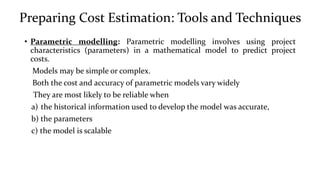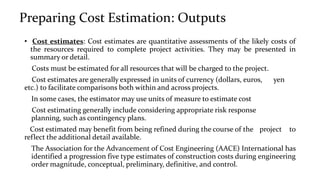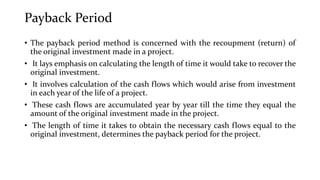The document provides information on preparing cost estimations and evaluating project profitability. It discusses inputs like the work breakdown structure and resource requirements that are used to prepare cost estimations. Tools like analogous estimating, parametric modeling, and bottom-up estimating are described for developing cost estimates. Outputs include the cost estimates themselves and supporting details. Methods for evaluating project profitability discussed are payback period, average annual rate of return, net present value, and internal rate of return. Factors like cash flows, investment costs, and discount rates are considered in these calculations to determine whether a project is profitable.























